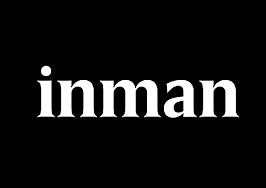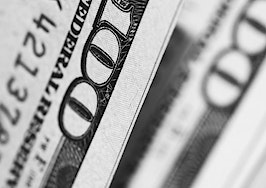If your clients ever ask your advice about paying off their mortgage with their 401(k), advise them against it.
Homeowners looking ahead to retirement should have two very clear objectives: accumulate a 401(k) nest egg of financial assets as large as possible, and pay off their mortgage as quickly as possible.
These objectives should be pursued independently — sacrificing one to obtain the other would result in loss for the following reasons.
1. Early withdrawal costs
Funds withdrawn from a 401(k) before age 59 1/2 trigger tax payments on the amount withdrawn plus a 10 percent early withdrawal penalty. Although there are exceptions to the withdrawal penalty, paying off a mortgage balance is not one of them.
That means paying off a mortgage balance with a 401(k) balance of the same amount would not be a break-even. It would, however, generate a sizable cash outflow.
2. Earnings opportunity loss on the existing 401(k) balance
An even larger loss from liquidating a 401(k) is the future earnings on the funds withdrawn. These earnings accumulate tax-free until the retiree reaches 70-and-a-half. At that point, taxes are paid only on the amounts withdrawn (at the retiree’s tax bracket at that time, which could be a lot lower than it is now.)
3. Possible earnings opportunity loss on new contributions
If paying off the 401(k) balance means abandoning the 401(k) altogether, the largest loss for people many years short of retirement would be the tax-deferred income they could contribute plus the tax-deferred earnings on those contributions they would be making in future years.
Their major objective should be to contribute as much as possible and obtain the highest earnings rate possible.
4. Maximizing earnings on 401(k) accounts
Over a period of years, the rate of return on a 401(k) should be well above the mortgage rate. A 45-year-old should be invested largely, if not entirely, in common stock.
A diversified portfolio of common stock will generate high rates of return over long periods, along with high short-term variability. For example, from 1926 to 2012, the median return on the common stock of large companies over 25-year periods was 11.34 percent. The highest 25-year return was 17.26 percent, while the lowest was 5.62 percent.
Over 10-year periods within the same time span, the median return was 10.52 percent with a high of 21.43 percent and a low of minus 4.95 percent.
As 401(k) account holders get closer to the day when they begin drawing funds out rather than putting funds in — say about 10 years before — they should consider shifting as much as half of their 401(k) assets into interest-bearing securities.
The reason is that the short-term variability in stock returns can be very costly once the drawdown period begins.
5. Avoiding 401(k) abuses
Not all 401(k)s are created equal — fund sponsors sometimes use them for their own purposes, which reduces value for the account holders.
Abuses that can contribute to the poor performance of a 401(k) include:
- Long delays in transferring employee contributions to the plan.
- Inclusion of the common stock of the company sponsoring the 401(k) as an investment option.
- Outright theft of the contributions.
- High administrative and investment expense ratios, which may reflect services provided to the fund’s sponsor.
Employees with poorly performing 401(k)s are not powerless. Help is available from the Employee Benefits Security Administration (EBSA) of the U.S. Department of Labor.
In addition, several law firms specialize in class action suits against employers who abuse their 401(k) programs. They can be found by Googling “401(k) abuses.”
6. Paying down the homeowner’s mortgage balance
The mortgage balance should be paid off by the time retirees begin drawing funds from their 401(k). If scheduled amortization will not do the job, homeowners should develop an extra payment program that will.
Mortgage payoff calculators were designed for that purpose, showing the schedule of balances remaining for any combination of extra payments and payment intervals.
To maintain the discipline needed for a successful extra payment program, homeowners should make the payments immediately after being paid. Waiting until the end of the pay period is a recipe for failure.
Jack M.Guttentag is Professor of Finance Emeritus at the Wharton School of the University of Pennsylvania and author of The Mortgage Encyclopedia.













